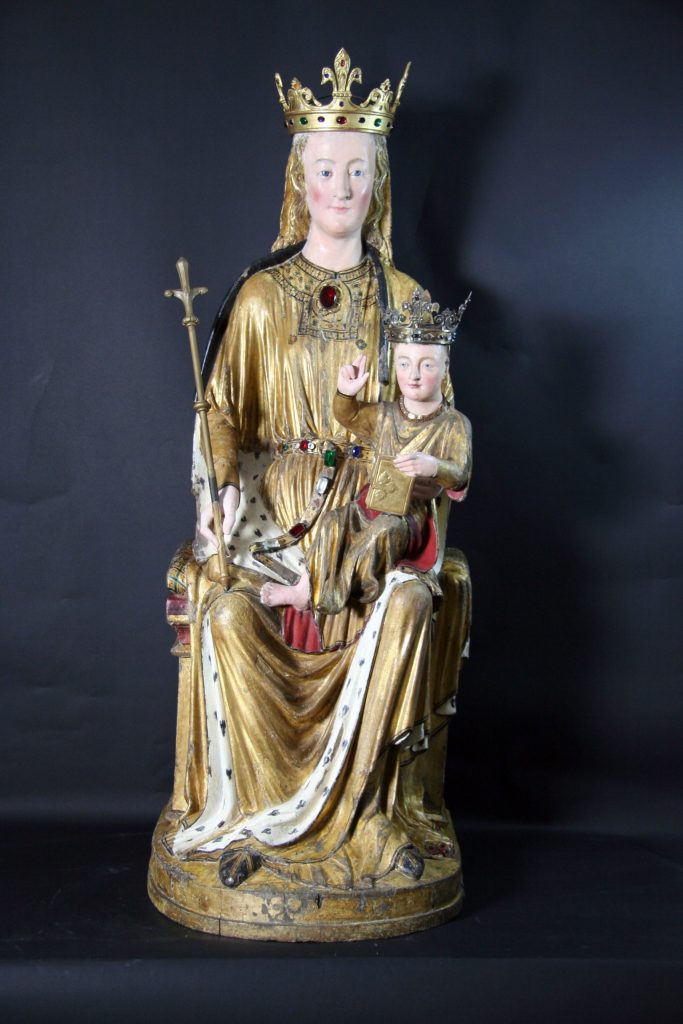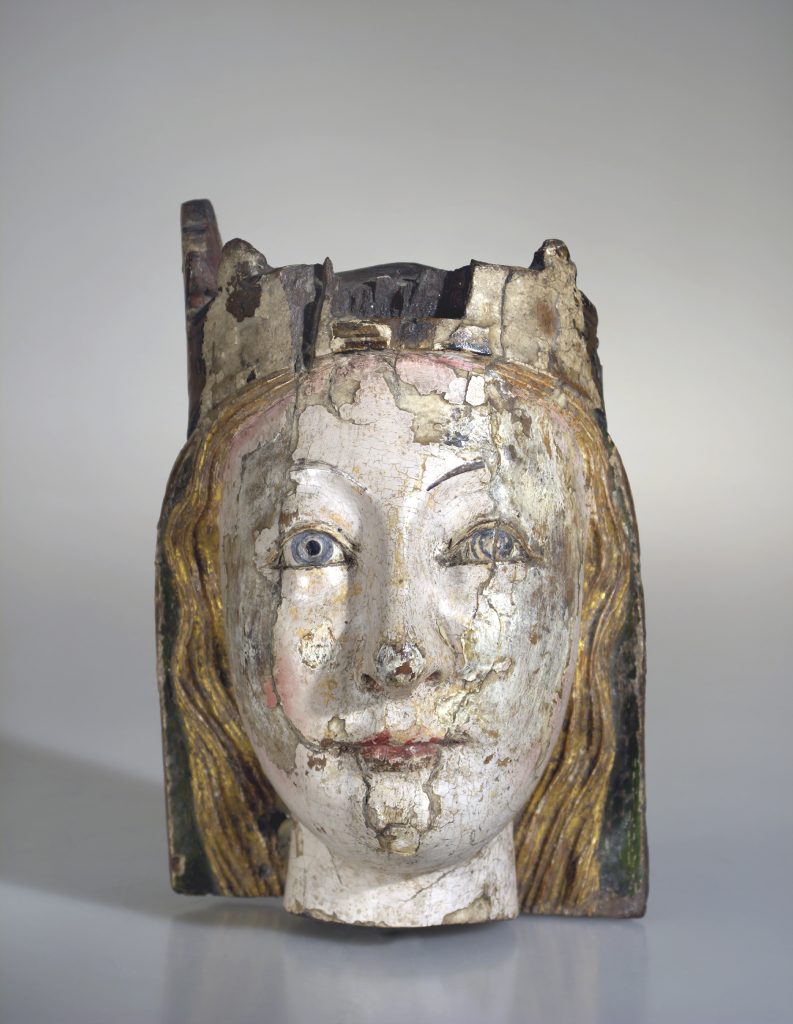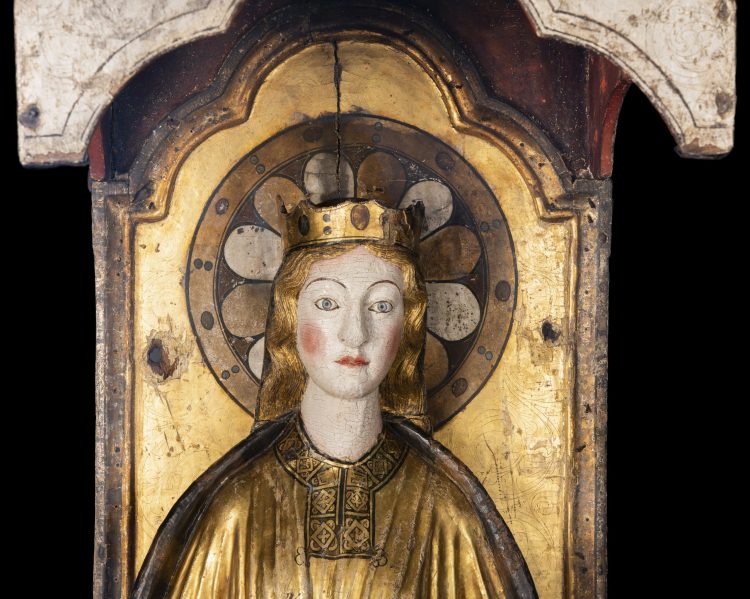
The so-called ‘Hove Madonna’ is among the most outstanding medieval sculptures in Norway. Mary and Child are both largely covered in gold leaf and the inside of the Virgin’s cloak, painted in blue and white, imitates vair (squirrel fur) or ermine. The crowned Virgin is seated frontally on a throne with black painted window motives on a white background that shades towards blue at the top and bottom, an effect that Unn Plahter described as ‘dual shading’. She holds the equally crowned Christ Child on her left knee, and in her head is a relic cavity with a diameter of 3 cm. The baldachin is entirely coated with glazed silver imitating gold, decorated with incised leaves and tendrils, while the ceiling features a golden sun, moon and ten stars. The twelve-fold nimbus on the dossal is surrounded by imitation precious stones. The image and the baldachin have been coarsely sawn off at the bottom. Objects held by the Virgin (a lily sceptre?) and Christ (an orb or a book?) are now lost.
The figure came to the museum around 1840 from the church of Hove in Vik on the Sognefjord, where it had stood under the pulpit. The baldachin only followed in 1966 from the nearby stave church of Hopperstad, where it was reused as a canopy over the baptismal font. There is no doubt that both elements originally belonged together and formed a Marian tabernacle shrine. According to a source from 1824, this shrine was equipped with gold-covered wings that carried reliefs of the apostles on the insides, of which iron pins on both sides of the dossal are the only reminders.

The Marian shrine probably decorated the high altar in the small but very carefully masoned Romanesque church at Hove before a Baroque altarpiece was installed there in 1684. Although Norwegian origins cannot be excluded, the precious execution would suggest that it was imported from overseas. The Virgin and Child show a strong resemblance to the so-called Notre-Dame des Miracles in the cathedral of Saint-Omer (Pas-de-Calais, northern France) and it may be assumed that the figure was produced in that region. Marian figures of the same type also spread further south, as shown by examples in Gaillac (Tarn, France) and Brindisi (Apulia, Italy). A closely related separate head from a Marian figure in the Bergen collection originated from Øystese on the Hardangerfjord (inv. no. MA 139).

Around Dover Strait (northern France, Flanders, or South England?), 1230-1240
From Hove (Sogn), in the museum since c. 1840 (Virgin and Child); from Hopperstad (Sogn), in the museum since 1966 (baldachin)
Oak, polychromed
H 94 x W 45.5 x D 35.5 cm (Virgin and Child)
H 124 x W 52 x D 48.5 cm (baldachin)
Inv. no. MA 27
